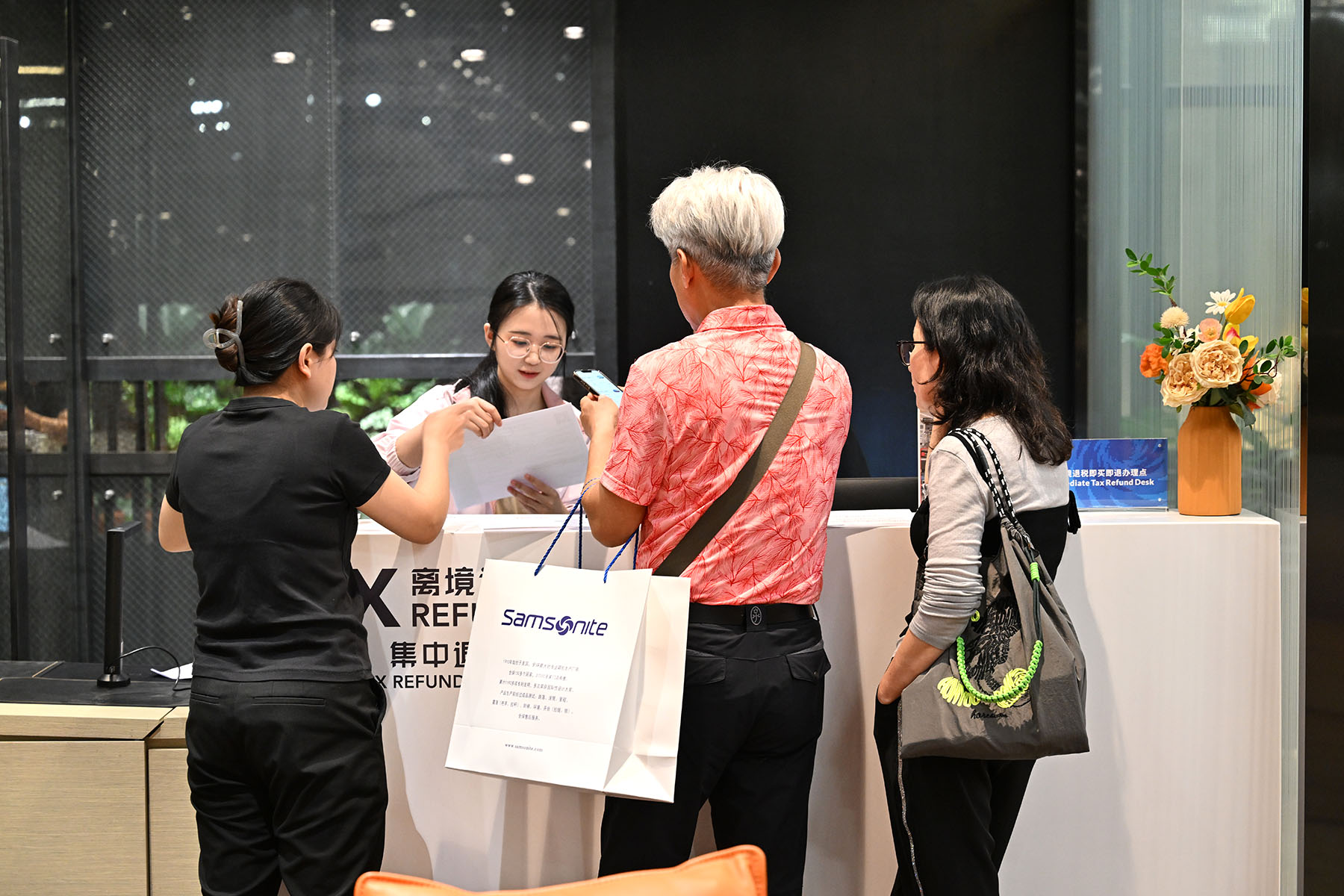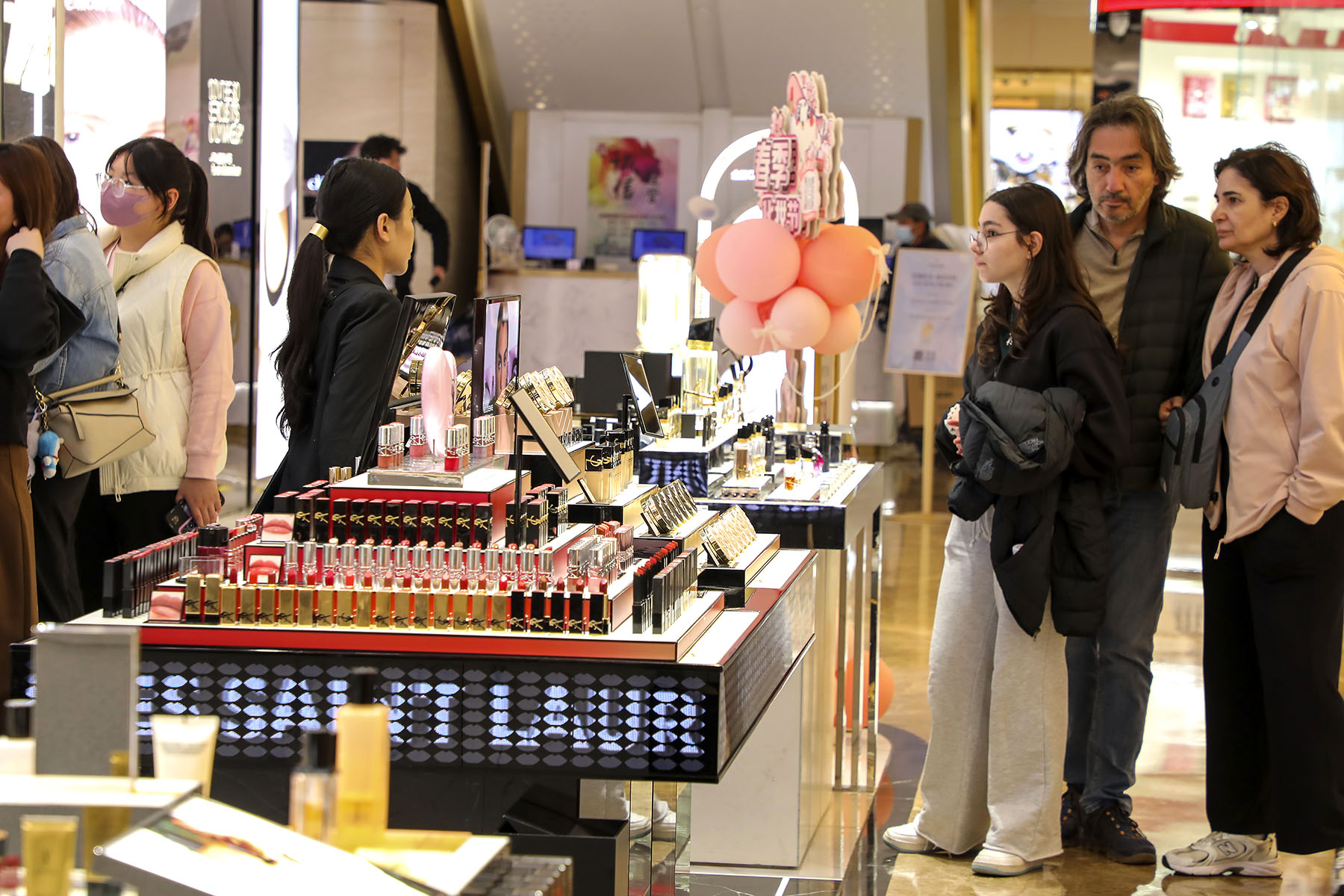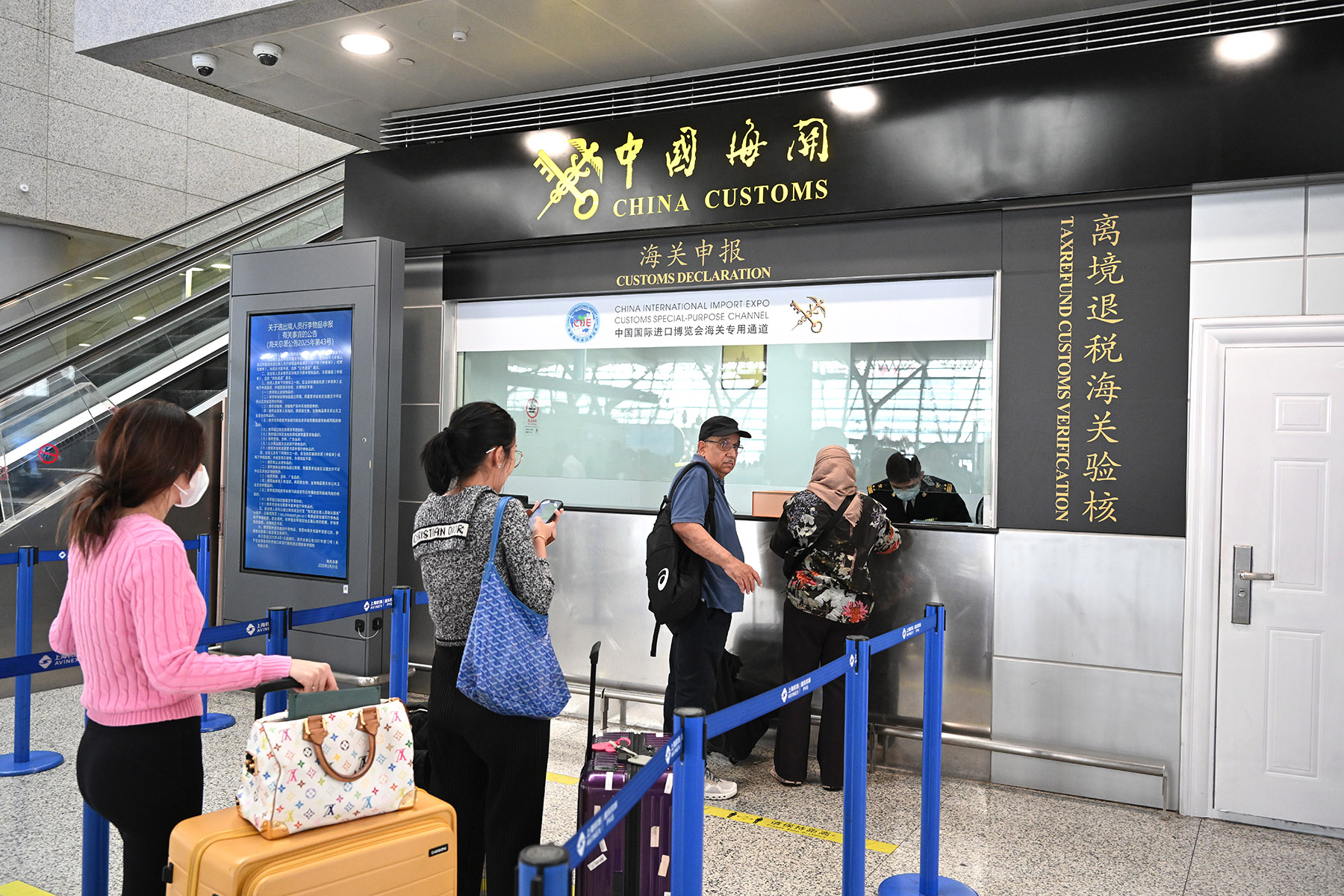Streamlining of system a boon for tourists, domestic consumption

Anna Lanny, a 26-year-old tourist from Russia, was delighted to receive her tax refund on the spot after making purchases recently at the upmarket SKP department store in Beijing's Chaoyang district.
"It's crowded here," she said. "I bought a handbag for myself and a pair of shoes for my father, and I got cash back immediately after shopping. There is no need to complete complicated forms. It's quite convenient," she added.
On April 8, China launched a nationwide rollout of a new tax refund policy for international tourists, replacing the traditional refund-upon-departure model with a more streamlined refund-upon-purchase one. Earlier, the policy was piloted in several cities.
READ MORE: Tourism boom tipped for May Day break in China
The new model allows eligible inbound tourists to receive tax refunds instantly, rather than having to wait until they leave the country.
"Providing overseas travelers with a greater variety of shopping options and improved, more convenient tax refund services will help stimulate inbound consumption and support high-standard opening-up and economic growth," said Chen Binkai, vice-president of the Central University of Finance and Economics.

New incentives
On Sunday, a new package of measures aimed at further optimizing the departure tax refund policy and boosting inbound spending was announced by the Ministry of Commerce and five other government departments in a joint circular.
The measures include lowering the starting point for tax refunds from 500 yuan ($68.6) to 200 yuan, effective immediately, and doubling the limit for cash refunds from 10,000 yuan to 20,000 yuan.
Adjustment of the starting point for refunds to 200 yuan is expected to enable more specialty stores, souvenir shops and gift shops to join the tax refund program.
The circular also outlines steps to expand the number of departure tax refund stores, increase the supply of merchandise and improve related services. More departure tax refund stores will be set up in major shopping areas, pedestrian streets, tourist sites, resorts, cultural venues, airports, passenger ports and hotels, according to the circular.
Departure tax refund stores are also being encouraged to broaden product offerings to include time-honored brands, renowned Chinese consumer goods, smart devices, intangible cultural heritage items, crafts and specialty products.
"The enhanced shopping experience will help draw more overseas tourists to China and drive an increase in shopping," said Wang Peng, an associate researcher at the Beijing Academy of Social Sciences, adding that it will also contribute to improving the tourism environment and inject more vitality into the market.
Sheng Qiuping, vice-minister of commerce, said at a news conference in Beijing on Sunday, that they are encouraging, "relevant institutions to provide tax refund services through various means such as mobile payments, bank cards and cash, and better meet the diverse payment service needs of overseas travelers".
Simplicity of use
Under the new refund-upon-purchase model, tourists can claim value-added tax rebates at designated retail stores right after shopping, which means an instant discount and free cash or digital renminbi.
For instance, if a foreign tourist buys a Huawei Mate XT with an original price of 23,999 yuan ($3,299) including tax, he or she can receive an in-store refund of about $360.
The amount is enough for someone to take a high-speed train from Beijing to Shanghai, plus a one-night luxury hotel stay.
To get the immediate tax refund, a foreign tourist must buy eligible goods at stores displaying "Buy and Refund" signs then present the VAT invoice, tax refund application form, and their passports at the store's refund counter.
The entire time for the process can be as short as a few minutes.
When departing the country the visitor needs to submit the original tax refund form to customs officials for stamping, and then present their receipts to the tax refund counter.
Since being piloted in Shanghai, Beijing, and other places, the new mechanism has been well received by a large number of overseas travelers, with a significant boost to consumption, experts said.
The scale of tax refunds processed through the refund-upon-purchase tax policy in 10 pilot areas increased 22-fold year-on-year in 2024, said Xie Wen, an official with the State Taxation Administration, at a news conference on Sunday.
The increase in the pilot areas is 18 times the national average growth rate of outbound tax refunds, Xie added.
In Beijing, the list of stores offering instant tax refunds to foreign tourists is not restricted to large shopping centers like Beijing SKP.
To date, there are 16 stores in the capital offering refund-upon-purchase services, with many of them also equipped with AI intelligent translation screens. Among them are well-known time-honored brands such as TCM pharmacy Tongrentang and the silk and cloth store Ruifuxiang.

Attracting visitors
China introduced the departure tax refund policy for overseas travelers in 2015.
Last year, sales of eligible goods rose 120 percent year-on-year, while the total amount of tax refunded increased by 130 percent, according to official data.
Inbound tourists spent a total of $94.2 billion last year, up 77.8 percent from a year earlier, Xinhua News Agency reported.
At the MixC malls in Shenzhen, Guangdong province, prominent signage and clear instructions for overseas shoppers seeking departure tax refunds are now a common sight in stores like Sundan and DJI.
At DJI's drone store, overseas tourists often arrive in groups to purchase drones and handheld cameras. "Besides our own promotions, Hong Kong-based influencers come to visit and post videos showcasing the departure tax refund process here," said a staff member, adding that nearly 60 percent of the store's total sales come from Hong Kong consumers.
The number of stores offering departure tax refunds at Shenzhen's MixC malls has risen by 30 percent year-on-year in 2025, according to Liang Jingyi, head of departure tax refund operations at Shenzhen MixC.
To further streamline the departure tax refund process for overseas travelers, Shenzhen on Sunday launched a new pilot program featuring a "one order, one bag" model at three designated malls.
Under the scheme, purchases and departure tax refund forms are packed together in sealed bags, enabling customs officials to quickly verify the packaging's authenticity and cut inspection time by more than 50 percent.
In Shanghai, Stephanie, a traveler from Australia, was discovering her first trip to the city was not just a tourism experience but also a shopping bonanza.
"I enjoyed the sights and the shopping experience here," she said, adding that she picked up souvenirs and clothes, including Chinese brands that are becoming increasingly popular among Australians.
What surprised her most was the departure tax refund policy, which she believes makes shopping even more appealing.
"The departure tax refund policy is totally new to me, and it is very helpful," she told Xinhua.
Sheng, from the commerce ministry, said in 2024, spending by overseas visitors accounted for about 0.5 percent of the country's GDP, compared with one to three percent in major economies. "China's inbound consumption holds great growth potential," he said.

Holiday bonanza
The recent surge in inbound travelers is expected to continue during the May Day holiday that runs from May 1 to May 5, analysts said. The booking volume for inbound travel products for the holiday has already surged over 170 percent year-on-year, according to Trip.com Group, China's largest online travel agency.
Last year, China recorded 132 million passenger trips by inbound travelers, a 61 percent year-on-year jump. The figure was more than 90 percent of the pre-pandemic level in 2019, representing a major rebound in the sector, according to the China Tourism Academy.
China plans to further expand its visa-free entry policy while optimizing its tax refund policies for overseas visitors.
"We will continue to innovate consumption scenarios, create an internationally friendly consumption environment and further promote inbound consumption," said Li Gang, director-general of the Ministry of Commerce's department of market operation and consumption promotion.
China's visa policies have been continuously adjusted and optimized. Currently, the country grants unilateral visa-free entry to 38 countries and has extended the transit visa-free period to 240 hours for travelers from 54 countries.
In 2024, visa-free entries reached 20.12 million visits, marking a year-on-year increase of 112.3 percent, according to official data.
In addition to easing visa access, China is working to improve transportation links to better serve overseas travelers.
Xu Qing, head of the transport department of the Civil Aviation Administration of China, said international passenger flights will be increased and airlines will be encouraged to expand into emerging markets.
ALSO READ: China refines departure tax refund policy to boost inbound consumption
Xu added that China will also encourage major airports to upgrade service counters, and provide one-stop assistance that covers tourism, payments, transportation and telecommunications. Efforts are also underway to enhance departure tax refund services by encouraging more airports to open tax refund stores.
At the same time, China is accelerating the development of international consumption center cities to further stimulate inbound spending.
The country is working to transform five cities — Shanghai, Beijing, Tianjin, Chongqing and Guangzhou in Guangdong — into major shopping centers.
In 2024, the number of inbound foreign travelers to these cities doubled compared with the previous year.
Together, they now account for nearly 70 percent of the country's departure tax refund stores and more than half of imported consumer goods.
China also plans to host more high-level international sports competitions and performances. It is supporting the growth of new sectors such as recreational vehicle camping, cruise tourism, and motor racing to provide overseas visitors with a wider range of modern, dynamic experiences, Sheng said.
The commerce ministry, together with five other bodies, launched the "Shopping in China" campaign on April 13 to help spur domestic consumption.
This year stands as the inaugural year of the campaign. Various promotional activities will be carried out nationwide throughout the year.
Xinhua contributed to this story.
zhuwenqian@chinadaily.com.cn


